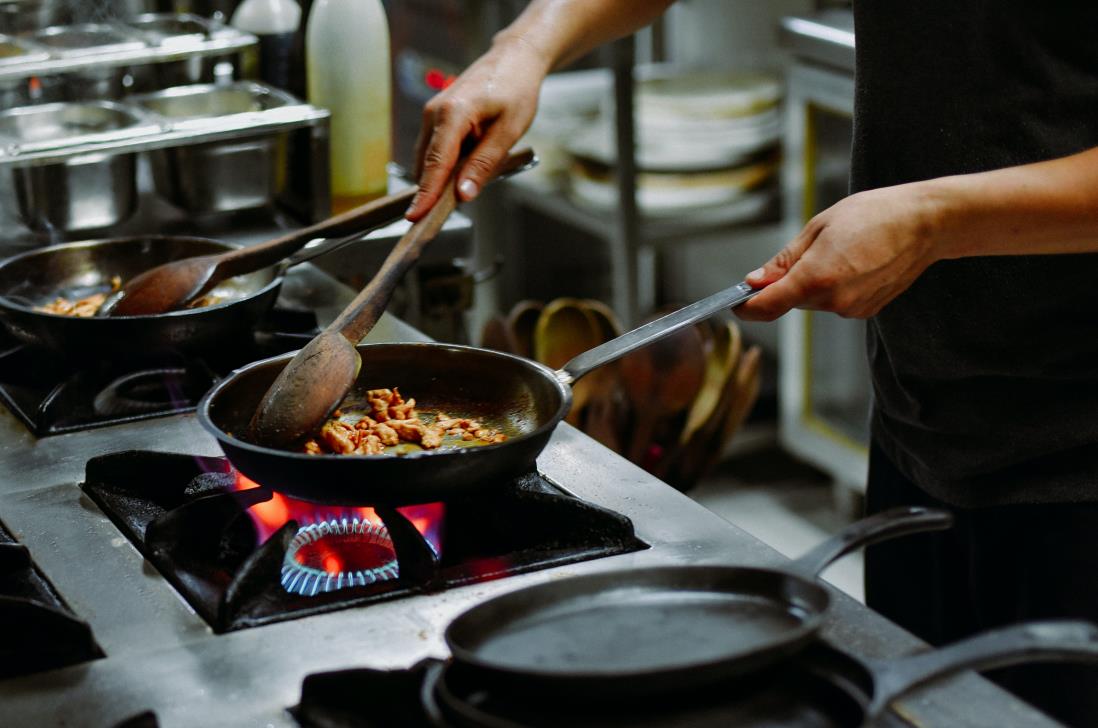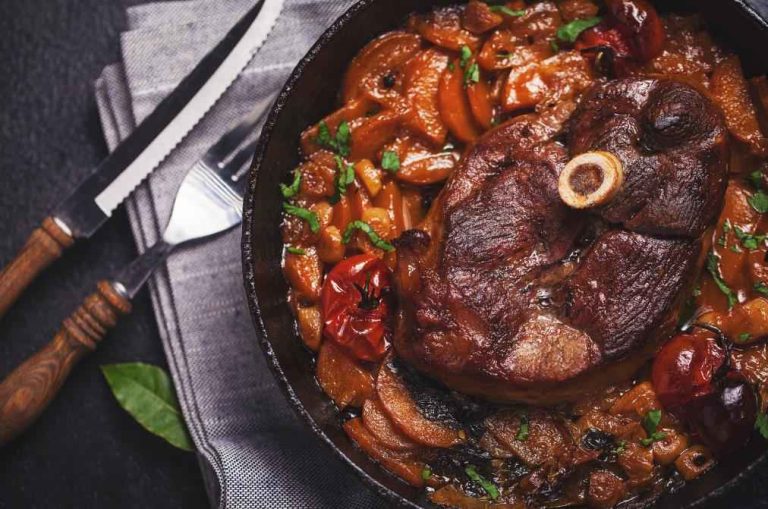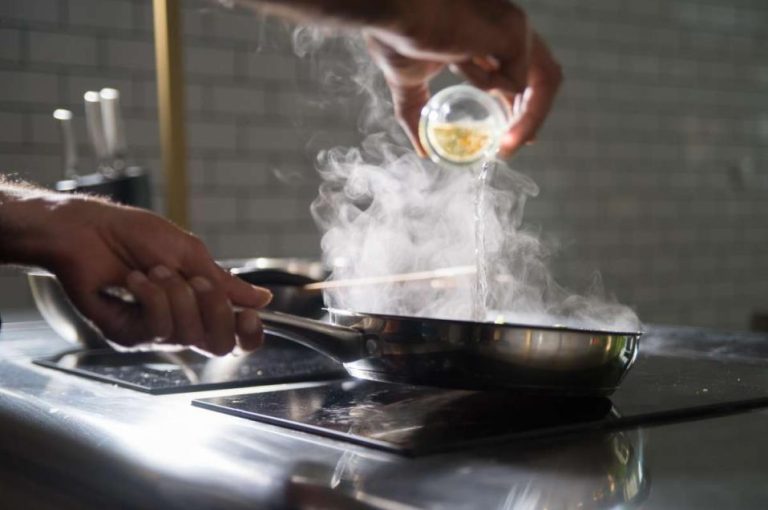Non-stick cookware has revolutionized the culinary world. Yet, due to safety and environmental concerns, people are seeking alternatives to non-stick pans. This presents a unique opportunity for cookware businesses to cater to changing preferences.
To stay ahead, businesses must grasp customers’ concerns about non-stick coatings and the difficulties of adopting alternative cookware. This includes differences in cooking techniques, material quality, and performance.
Let’s dive in deeper to find out more about non-stick pans and the alternatives available to them! You can alter their products and increase sales by understanding the problems of each option. This will foster long-term loyalty, ultimately benefiting the business.
What is a non-stick pan?
Non-stick pans feature a chemical coating, which is usually polytetrafluoroethylene (PTFE). This serves to prevent food from sticking to the surface, making cooking and cleaning labor-saving for home cooks.
Besides PTFE, there are other non-stick coatings as well. For instance, ceramic is a more natural and chemical-free option. Another option is enamel which offers a range of attractive colors.
The base material of non-stick pans can vary, with options like stainless steel and aluminum. These materials are then coated with the non-stick layer.
Non-stick pans are manufactured using techniques like steel coating and cladding. The process involves joining layers of steel or aluminum together. These methods positively impact the pan’s heat distribution, durability, and overall performance. This gives businesses a range of options to cater to diverse customer needs.
Buy Wholesale Cookware and Start Scaling up with Us Today
Contact us and connect with a sales rep to get a free quote.
Are non-stick pans safe to use?
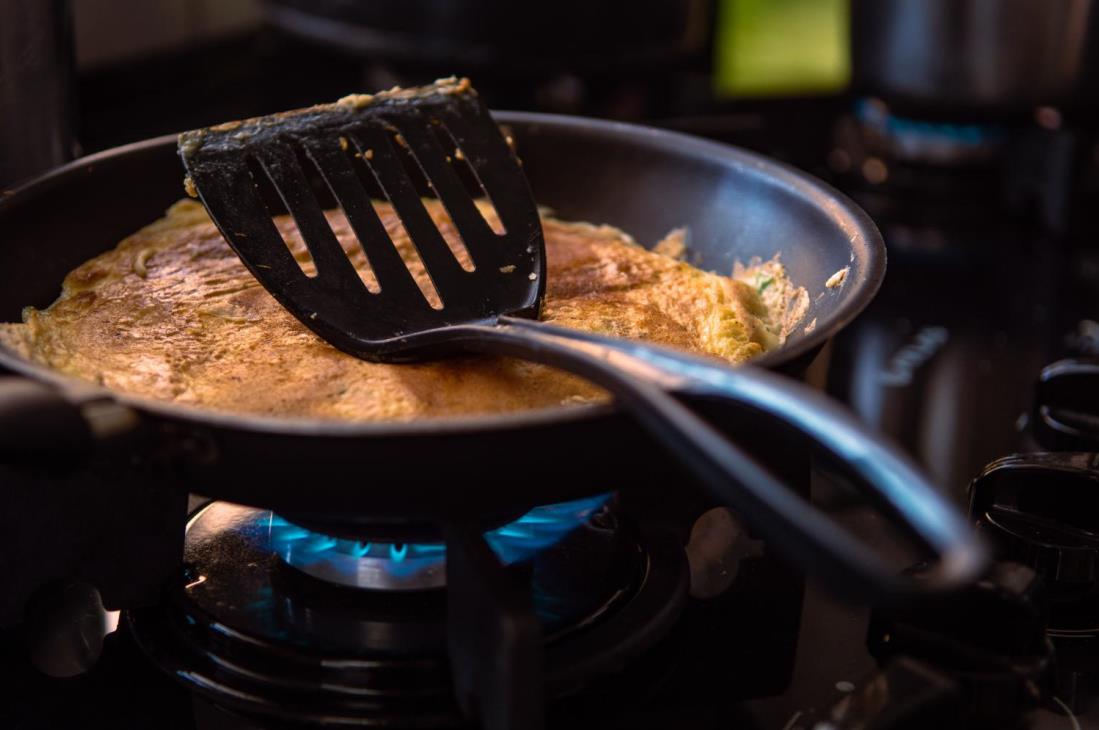
Simply stated, non-stick pans are generally safe to use. But there are some concerns about potential health impacts due to the chemicals in the coating.
The primary safety concerns involve the use of poly-fluoroalkyl substances (PFAS) in non-stick coatings. PFAS have been found to increase the risk of cancer and thyroid diseases. However, these substances are no longer used in the manufacturing process.
Instead, PTFE and Teflon are used for non-stick pan coatings. These are considered safe as long as the temperature does not exceed 260°C (500°F). Above this threshold, the non-stick coating may break down and be ingested, causing harm.
Non-stick pans are generally safe for health-conscious customers as long as the instructions to take care of them are followed. This is bound to ensure your customers a worry-free and safe cooking experience.
Downsides to using non-stick pans?
Limitations of non-stick pans exist regardless of the many benefits they offer. Understanding them can help customers make informed decisions about their cookware.
Here are some notable disadvantages of non-stick pans:
- Limited durability: The non-stick coating tends to wear off over time, reducing its effectiveness.
- Heat sensitivity: Non-stick pans can’t withstand high heat, as it damages the coating.
- Cooking Limitations: Non-stick pans have low heat tolerance. This makes them unsuitable for certain cooking techniques like browning and searing.
- Requires handwashing: Dishwashers can damage the delicate coating; thus, careful handwashing is required.
Besides these drawbacks, non-stick pans may release harmful fumes when overheated.
Considering these drawbacks will ensure customers understand the potential limitations and care requirements. This will help them make well-informed purchase decisions.
Non-stick pan alternatives: what are your choices?
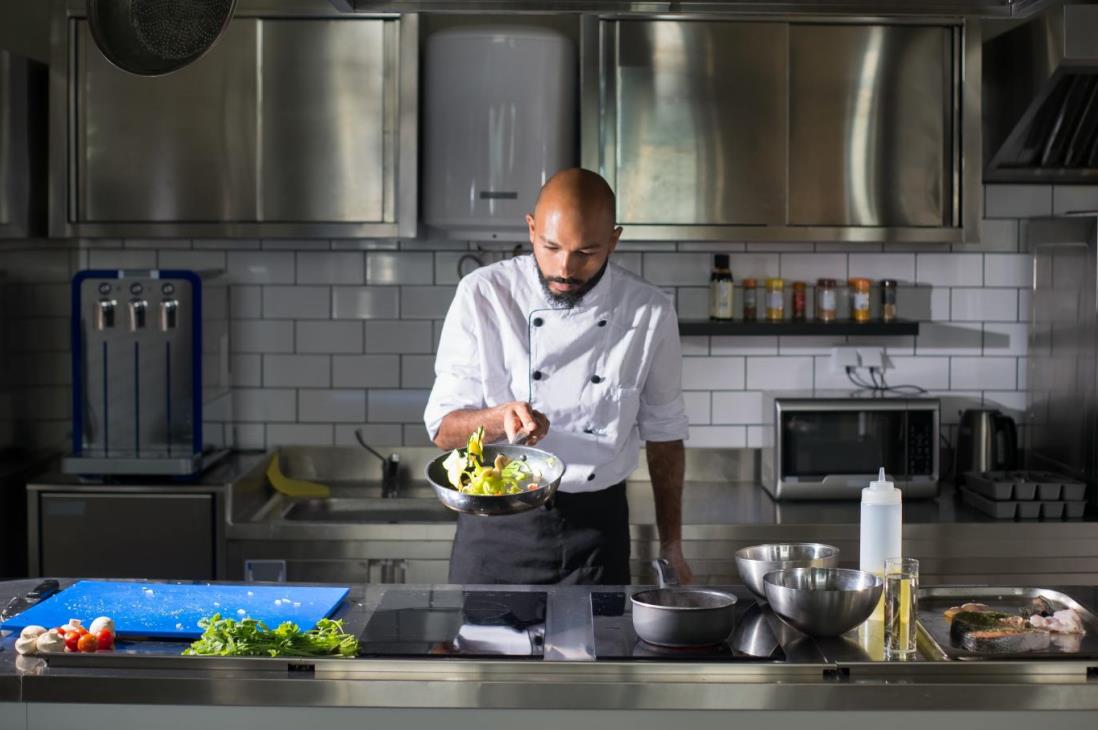
Having good quality cookware is essential to any kitchen. As a business, it is vital to offer a wide variety of options beyond non-stick pans to cater to diverse customers.
Many alternate options to non-stick pans are available, each with its unique features. They cater to different cooking styles and preferences, which often provides benefits that non-stick pans do not.
Let’s explore some non-stick pan alternatives and their features.
Stainless steel
Due to its versatility, durability, and attractive appearance, many chefs around the world rely on this classic pan. It is composed of a blend of metals, such as iron, nickel, and chromium.
Most stainless steel pans are made up of layers; the core is made of aluminum, and the outer layer consists of stainless steel. They are called impact-bonded stainless steel pans, preventing hot spots by evenly conducting heat.
Another type is the fully-clad stainless steel pan, which uses a cladding process to bind together layers of stainless steel. This enhances the pan’s heat retention and enables it to withstand rigorous use.
These pans are compatible with various heat sources, offering your customers versatility. However, they require proper seasoning to prevent food from sticking to the pan’s surface.
Stainless steel pans are also a popular choice for eco-conscious customers since they cut waste and can be recycled.
Pros of stainless steel pans
- Durability: Stainless steel pans are robust and long-lasting.
- Versatility: They suit various cooking surfaces and methods.
- Compatibility: These pans are oven and broiler friendly.
- Heat Performance: They offer excellent heat tolerance and even distribution.
- Easy Cleaning: Stainless steel pans are scratch-resistant and dishwasher-safe.
- Non-reactive: They are ideal for cooking acidic foods without reacting.
- Safe Materials: They’re free of chemical coatings and toxic components.
Cons of stainless steel pans
- Sticking: Food may stick to the surface, causing burning and affecting food quality.
- Weight: Heavier than other cookware types due to multilayered composition.
- Price: Often less affordable due to aluminum layers and overall construction.
- Lifespan: Prone to discoloration and wear, requiring frequent replacement.
Ceramic
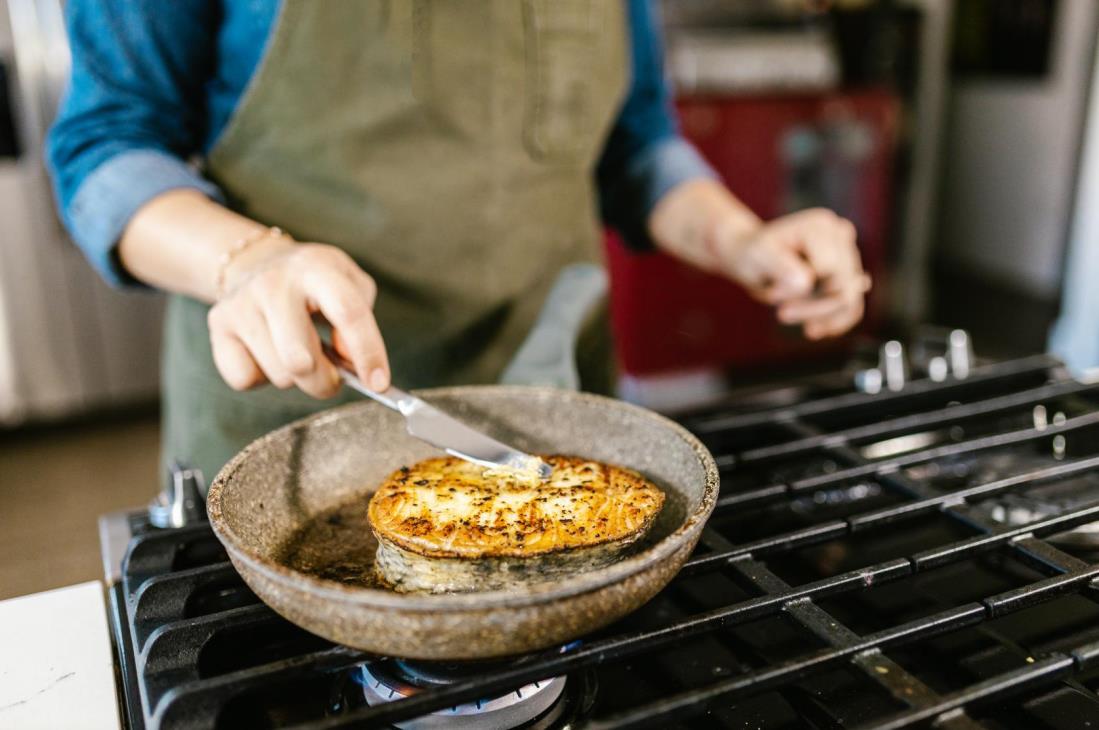
Ceramic non-stick pans are a common alternative to non-stick pans for health-conscious consumers. They are eco-friendly and provide a smooth cooking experience.
These pans do not rely on synthetic materials like Teflon for their non-stick properties. Instead, they feature a sol-gel coating made from silicone oil.
The ceramic coating also has high heat resistance. They are lightweight, easy to handle, and compatible with various heat sources. This makes them attractive for businesses who want to provide versatile, safe and eco-friendly cookware.
Pros of ceramic pans:
- Safety: Requires little to no oil, promoting healthier cooking.
- Easy Cleaning: Food residue easily wipes off, allowing for effortless cleaning.
- Durability: Scratch-resistant and less likely to chip or peel.
- Eco-friendly: Made with natural, non-toxic materials.
Cons of ceramic pans:
- Fragility: More prone to breakage compared to other alternatives.
- Heat Limitations: Uneven heat distribution due to gaps in the nanoparticle-sized silicone coating.
- Maintenance: Not dishwasher friendly; requires careful cleaning with non-abrasive materials.
- Limitations: Not suitable for searing and browning.
Cast iron
With its rough, textured surface, cast iron cookware is a popular alternative to non-stick pans. Properly seasoned cast iron pans offer a near-non-stick cooking experience. These pans are durable and have good heat retention properties.
Cast iron pans are suitable for various cooking methods as they can withstand high temperatures. They are also compatible with induction cooktops, making them versatile.
Cast iron cookware is known for its longevity, as it can last for generations with proper care. They are a valuable addition to businesses that are looking to provide durable and timeless cookware.
Pros of cast iron pans:
- Heat Retention: Excellent heat retention and distribution, suitable for ovens and grills.
- Strength: Highly durable and resistant to scratches, dents, and other damage.
- Affordability: Cheaper than many alternatives, providing value for money.
- Versatility: Suitable for various cooking methods and heat sources.
Cons of cast iron pans:
- Sticking: Food may stick when the seasoning wears off, leaving residue and potentially damaging the pan.
- Maintenance: Requires periodic re-seasoning, making it more high-maintenance.
- Weight: Heavy and difficult to maneuver in the kitchen.
- Reactivity: Not suitable for cooking acidic dishes due to its reactive properties.
Carbon steel
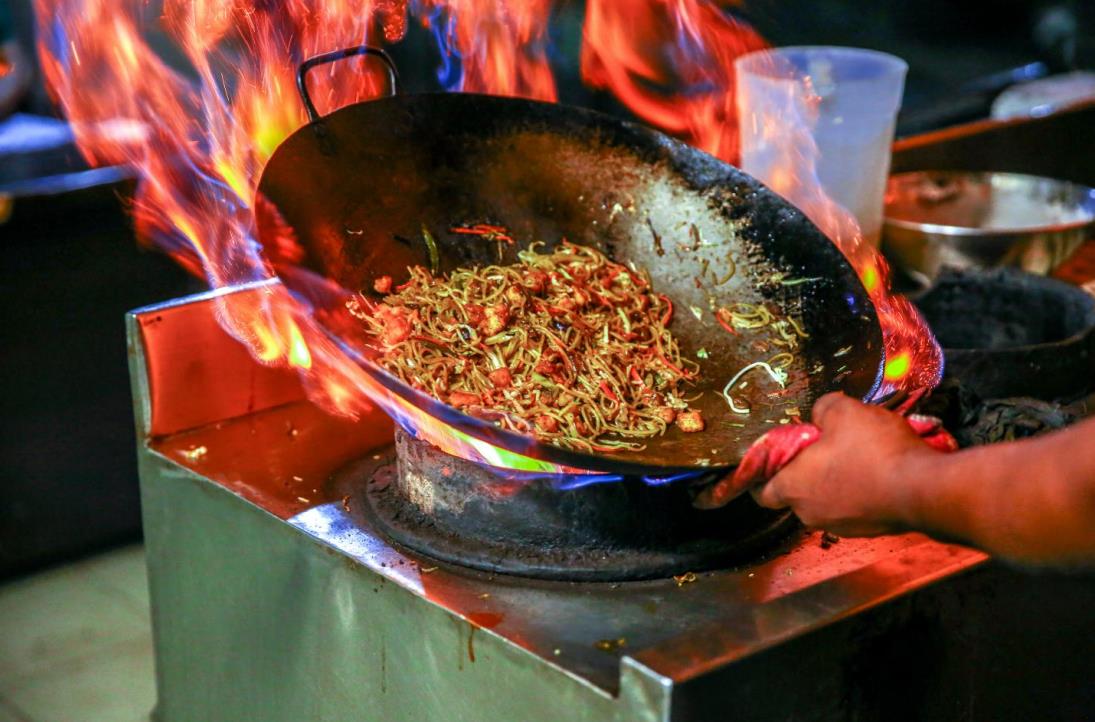
Carbon steel pans present a compelling alternative to traditional non-stick cookware for businesses. Composed of iron and carbon, these pans are lightweight and feature thin layers. This construction offers rapid heating and even heat distribution, highly valued by chefs.
When seasoned correctly, carbon steel pans develop a natural non-stick surface. They are also highly durable, resistant to scratches, and can withstand high temperatures. This resilience ensures long-term use in professional kitchens.
Carbon steel pans offer eco-friendly benefits that attract environmentally-conscious businesses. Carbon steel pans are chemical-free, unlike non-stick pans with harmful chemicals like PFOA and PFAS. This helps in promoting a healthier cooking experience and reduced environmental impact.
These pans work well on induction, gas, and electric stovetops. By choosing carbon steel pans, businesses can satisfy customers who value sustainable, adaptable cookware without sacrificing quality or performance.
Pros of carbon steel pans:
- Heat-responsive: Quick and even heat distribution due to a thinner construction.
- Versatile: Suitable for various cooking methods and heat sources.
- Easy handling: Lighter than cast iron pans, improving maneuverability in the kitchen.
- High-heat compatibility: Ideal for use with ovens, grills, and broilers.
- Affordable: A cost-effective option compared to many non-stick pans.
Cons of carbon steel pans:
- Rust-prone: Susceptible to rust if not dried and oiled after washing due to iron content.
- Requires maintenance: Proper seasoning is needed for a non-stick surface, which may be inconvenient.
- Reactive: Cooking acidic foods may cause discoloration and damage.
- Durability: Prolonged use can lead to changes in shape and color, affecting longevity.
Buy Wholesale Cookware and Start Scaling up with Us Today
Contact us and connect with a sales rep to get a free quote.
Selling non-stick cookware alternatives
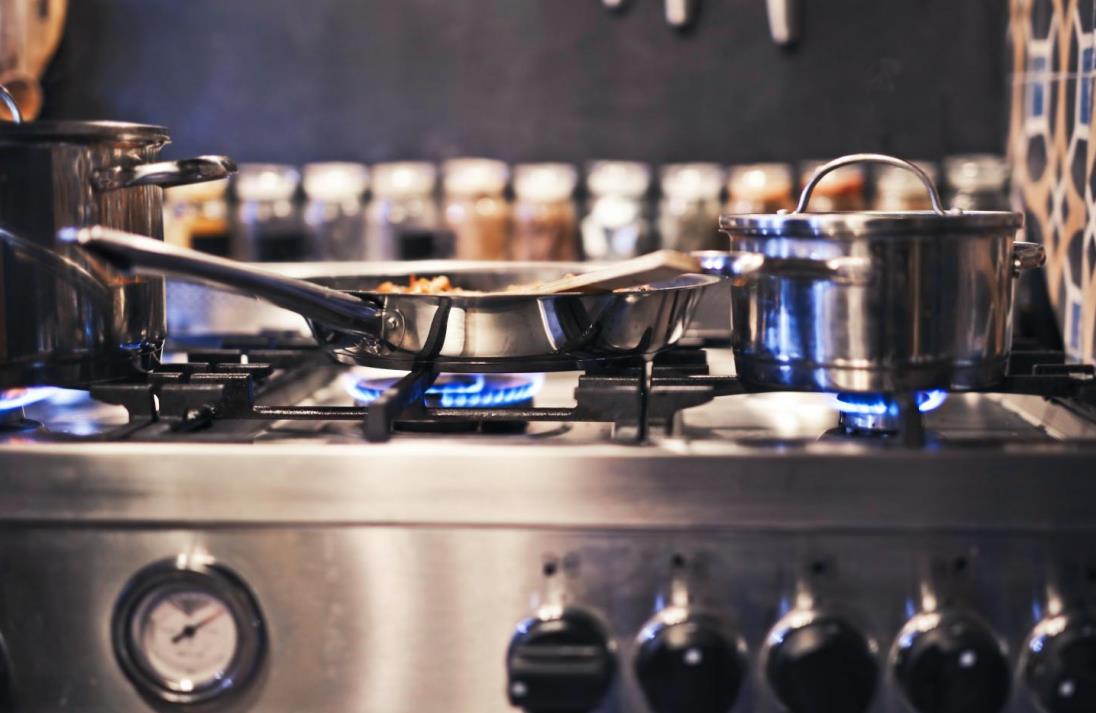
Offering alternatives to non-stick pans can be beneficial to businesses in the cookware industry. Through the expansion of the product range, businesses can increase sales.
Some obvious benefits include that you are accessing a wider market, catering to the needs of eco-friendly and health-conscious customers. By serving this consumer market. Your business can position itself as a forward-looking retailer that caters to such demands.
On another note, if your business offers a diverse range of cookware, it can stand out from its competitors. Most businesses only sell the traditional non-stick pan. This differentiation can attract customers seeking more specialized and innovative cookware solutions.
Another way of benefitting from selling alternatives is through repeat purchases. This occurs in the case of some types of cookware, such as cast iron and ceramic, which require complementary products.
These often include seasoning oils, cleaning tools, and protective accessories for proper care. Offering these items alongside non-stick alternatives can encourage repeat purchases and increase revenue.
Conclusion
Various alternate options to traditional non-stick pans are available for your business. The ideal choice ultimately depends upon your customer’s specific needs and preferences. Each substitute option offers unique features that suit different cooking styles.
Through careful consideration of the pros and cons of each alternative, you can sell the appropriate type of cookware. It can help you provide a diverse range of high-quality cookware that caters to various cooking needs. This can ultimately contribute to the growth and success of your business in the cookware industry.
Our team of experts can guide you through anything you need to know about getting the appropriate cookware for your needs. If your business is in the market for high-quality cookware, LeeKnives can ensure excellent services. Contact us to receive a quote today.
